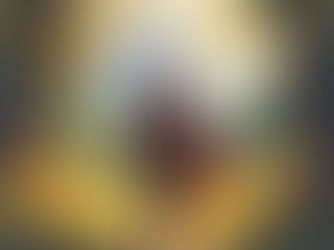top of page

The Blood of Tharta
Check out the Arcverse's first novel

Faelvur, the dark elven god of fire
Faelvur, the dark elven god of fire


The Blood of Tharta
Check out the Arcverse's first novel
1/3

Role Play Games for Beginners
Discover Worlds. Tell Stories. Create Legends
Welcome to the Arcverse
Your gateway to tabletop roleplaying games — whether you’re starting with Dungeons & Dragons or exploring new systems and genres.
We offer expert RPG advice for beginners, Game Master tools, and worldbuilding guides to help you create and run unforgettable adventures. Whether you play fantasy, sci-fi, cyberpunk, horror, superheroes, or post-apocalyptic settings, the Arcverse is your home for creativity, storytelling, and game-ready inspiration.
Start your next campaign. Build your world. Shape your legend.
DND Passive Perception
D&D Passive Perception
Passive Perception: This is a measure of a character's general awareness of their surroundings, representing their ability to notice hidden threats or objects without actively searching for them. It's essentially how well a character can detect subtle cues in the environment in a non-combat situation.
Base Passive Perception: This is the starting point for calculating a character's Passive Perception and is determined by adding 10 to the character's Perception skill modifier. This base assumes an average level of alertness under normal conditions.
Perception Skill Modifier: The bonus (or penalty) applied to a character's Perception checks, derived from their Wisdom modifier, proficiency in the Perception skill (if applicable), and other modifiers such as those from feats or equipment.
Wisdom Modifier: Reflects the character's sensory acuity, intuition, and general awareness of their environment. A higher Wisdom score improves a character's Passive Perception by increasing their Perception skill modifier.
Proficiency Bonus: If a character is proficient in the Perception skill, their proficiency bonus is added to their Perception skill modifier, thereby increasing their Passive Perception.
Feat and Equipment Modifiers: Certain feats and pieces of equipment can provide bonuses to a character's Perception checks, which in turn affect their Passive Perception.
Advantages and Disadvantages: While Passive Perception doesn't typically involve rolling dice, conditions that impose advantage or disadvantage on Perception checks might affect Passive Perception at the Dungeon Master's discretion.
Observant Feat: This feat specifically increases a character's Passive Perception (and Passive Investigation), highlighting how certain character choices can significantly enhance their ability to detect hidden objects or creatures.
Passive Perception In Depth
Passive Perception in Dungeons & Dragons serves as a key mechanic to gauge a character's ability to notice things in their environment without actively looking for them. It plays a crucial role in scenarios where stealth and awareness determine the success of both player characters and their adversaries.
At its core, Passive Perception starts with a Base Passive Perception of 10 plus the character's Perception skill modifier. This calculation is designed to reflect an average level of alertness in standard conditions, providing a baseline for how attuned a character is to their surroundings.
The Perception Skill Modifier is a critical component, encapsulating various factors such as the character's innate sensory capabilities (via their Wisdom modifier), training or proficiency in the Perception skill, and additional influences from feats or equipment that enhance sensory acuity.
Wisdom, being the attribute tied to perception and intuition, directly influences a character's ability to perceive their environment. A higher Wisdom score leads to a higher Perception skill modifier, which in turn raises the character's Passive Perception.
Proficiency in the Perception skill represents specialized training or a natural aptitude for noticing details in the environment. Characters proficient in this skill add their Proficiency Bonus to their Perception checks, which is also reflected in their Passive Perception.
Feats and equipment can further modify a character's Perception skill, offering specific bonuses that increase their Passive Perception. These modifications signify the character's enhanced senses or specialized gear designed to improve awareness.
The game mechanics also account for situations that might grant advantage or impose disadvantage on Perception checks. While Passive Perception itself doesn't involve active rolls, the Dungeon Master may adjust a character's Passive Perception to reflect these conditions, emphasizing the dynamic nature of awareness and detection.
The Observant feat exemplifies a character choice that directly increases Passive Perception, showcasing how players can tailor their characters to be more attuned to hidden threats or important clues in their adventures.
Understanding and effectively utilizing Passive Perception allows for a richer, more immersive gameplay experience. It underscores the importance of characters' sensory awareness and the subtle interplay between the adventurers and their environment, enhancing the narrative depth and strategic elements of Dungeons & Dragons.

Enhancing Game Play with D&D Passive Perception
bottom of page













